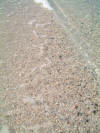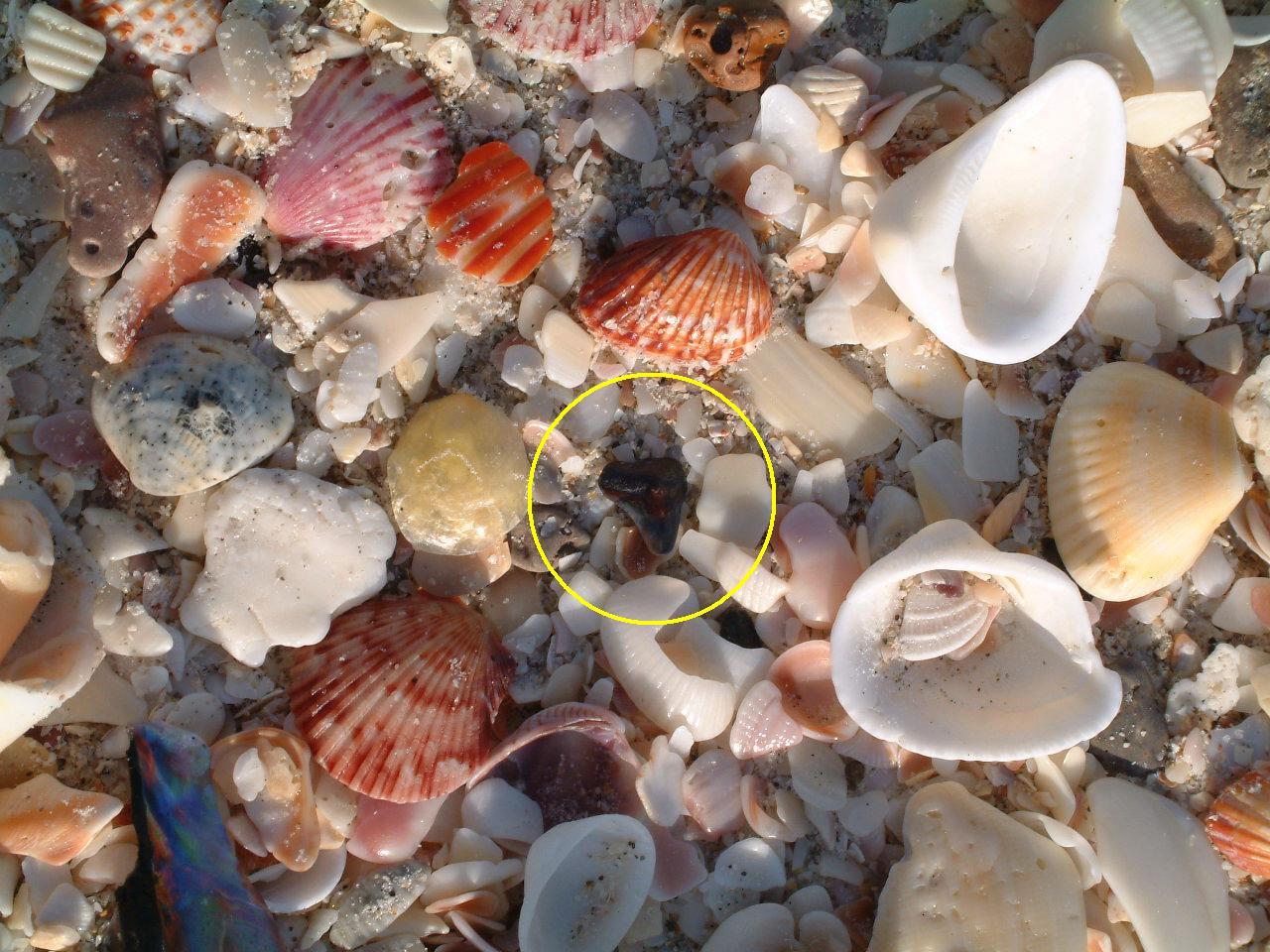Shark Teeth?!?!? Yikes!!!
Actually... it's really amazing. Million year old fossilized shark teeth.
And you just find them right on the beach....
 |
|
 |
|
 |
| Sift through the dry sand.. |
|
... snorkel in 2ft of water. |
|
or just walk the beach. |
 |
 |
| Spot them while shell hunting. |
Time your walk for a sunset finish. |

Click it for a bigger pic.
Active shark fishing has taken a
bite out of the local shark population, and sharks are a rare sight here today.
But along the Venice area beaches, you'll find plenty of evidence that
incredible numbers of sharks once lived nearby.
|
 |
Collecting
prehistoric sharks teeth has been
a favorite pastime of visitors and residents of the Venice area for
years. They may be black, brown, or gray, depending on the minerals in
the soil in which they have been buried. They range in size from one
eighth inch to three inches, and on rare occasions more.
Sharks of all species
continually shed their teeth and grow new ones. They have 40 or more
teeth in each jaw. Behind the functional rows or teeth are seven other
rows of teeth developing into mature dentures to replace teeth as they
are shed or lost. In ten years, an average Tiger shark can produce as
many as 24,000 teeth. |
Besides sharks teeth, fossils of other marine creatures are also found in
this area. Because millions of years ago most of Florida was under water, many
fossils are found inland as well as on the beaches. State law prohibits digging
without a permit however.
Identification of sharks teeth, which come in many different shapes and sizes,
is relatively easy. All of the teeth in the mouth of a single type of shark are
the same shape. They vary only in size. The shape of the teeth of each species
is distinct. Local book stores offer many books on the subject.
For millions of years, sharks have lived and died in the Gulf of Mexico. Dead
sharks sink to the ocean floor where they are covered by layers of sand and
silt. Over time, the cartilage of their bodies disintegrates. Water and storm
action eventually sweeps the sand away, exposing the teeth. Some are washed up
on shore with the changing tides and waves.
There are over three hundred and seventy distinct species of sharks. They are
all cartilage based fish without air bladders. Dermal denticles, which are rough
scales with tooth-like structure, cover their skin. Digestively, they have a
special adaptation called a spiral valve which increases surface area in a
rather short intestinal tract. Any further statement about shark biology or
behavior would truly depend upon the species. Sizes range from the dwarf shark
which rarely attains much more that half a foot to the sixty foot 40 ton whale
sharks. Fortunately, the two largest species, whale and basking sharks, make
their living filter feeding one of the ocean's smallest animals. These gentle
slow-moving giants have hundreds of rows of hair-like gill rakers that cull
plankton and tiny fish from the water flowing through their mouth.
The danger sharks pose to man:
Of hundreds of species of sharks, a handful are filter feeders deriving their
nutrition from creatures smaller than several millimeters. Another substantial
fraction live at depths not visited by man except within enclosed submersibles.
Many more species are too small to pose a threat to man. Others have specialized
adaptations that dictates the food sources they utilize: the long whip-like tail
of the thresher; the impaling teeth of the sand sharks; the flat crushing teeth
of the nurses. Remaining are a few dozen species that have the physique if not
the inclination to feed on Homo Sapiens. Of all of these only three species are
known to participate in unprovoked attacks on people: bulls, tigers, and great
whites. Yet, we have developed an irrational fear of all sharks.
|
LEMON |
CARCHARODON |
DUSKY |
SAND SHARK |
BULL SHARK |
 |
 |
 |
 |
 |
| |
The largest and most
impressive of extinct sharks |
|
|
Bull, Dusty, and
Black-tipped are abundant, however they are difficult to distinguish
from each other and from Lemon Sharks |
Courtesy of http://www.veniceflorida.com/shark.htm
|